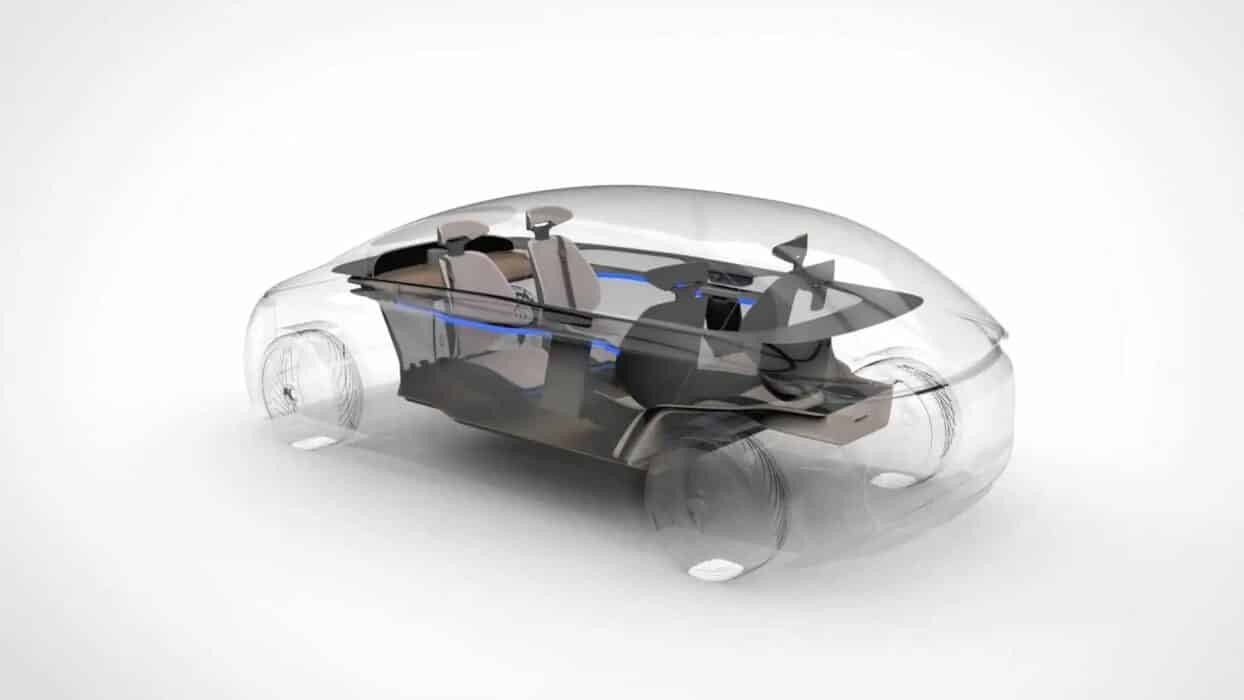
The German Aerospace Center presented a prototype equipped with an unusual powertrain, which promises a range of 1.000 km
The first Interurban Vehicle (IUV) will be built by German Aerospace Center (DLR). The institution released the first images of the first concept of medium and high class vehicles. IUV combines a fuel cell, a battery and new approaches to energy management. O DLR promises that the hydrogen car that can be fueled like an electric car will deliver 1.000 km of autonomy.
Hydrogen-powered car that can be recharged like an electric one

O hydrogen powered car it is five meters long, two meters wide and can accommodate five people. As an “intercity vehicle”, the five-meter car is optimized not for intracity traffic, but for travel between cities and even over long distances.
According to the advertisement, the IUV is designed for “emission-free and comfortable long-distance driving of up to 1.000 kilometers”. In terms of the drive concept, the DLR opted for a battery/fuel cell combination, referred to in the post as “fuel cell plug-in hybrid”.
By definition, this is not entirely correct, as both the battery and fuel cell drive part use the same electric motor, and it is not divided into two complete drive systems, each with its own energy storage and motor, like a hybrid.
However, with this designation, the principle is clear: like, for example, the Mercedes GLC F-Cell, the battery can also be charged via cable, which is not possible in the Hyundai Nexo and Toyota Mirai.
48 kWh battery
The IUV battery is larger than conventional combustion plug-in hybrids, with an energy capacity of 48 kWh. The battery is installed at the rear of the car.
Hydrogen tanks with a capacity of 7,5 kilograms are installed in the underbody, where electric cars usually have a battery. The fuel cell at the front of the car has an output of 45 kW, which should be enough to meet energy needs at long-distance speeds. The electric motors produce a total of 136 kW, so the difference must be compensated by the battery.
In order to achieve a range of 1.000 kilometers, energy management was also done as efficiently as possible. For this, a metal hydride storage system was developed that uses part of the pressure difference between the hydrogen tank at 700 bar and the fuel cell at 5 bar to generate additional cooling and air conditioning – this is significant energy that may not be removed from the battery (ed).
Hydrogen car weighs only 250 kg
“The body structure of the German Aerospace Center's hydrogen car weighs only 250 kg, which is about a quarter less than normal in this vehicle segment,” says DLR project manager Sebastian Vohrer Institute for Automotive Concepts in Stuttgart.
The car's structure is made possible by the use of fiber-reinforced plastics, but aluminum and multi-layer materials are also used in appropriate places. The design also adapts to this. Structures fulfill several functions. The floor structure, for example, is used to conduct electricity and data transmission, in addition to the carrying capacity of all the car's superstructures.
“This eliminates the need for extra cabling and further reduces overall weight.” The vehicle shown in the photographs is an illustration – in other words, an interpretation of how the DLR team could envision a possible body on a technology platform of the kind that is being developed. However, the prototype serves a different purpose: “The initial prototype gives a first impression of how the car might look in practice,” says Forer.






